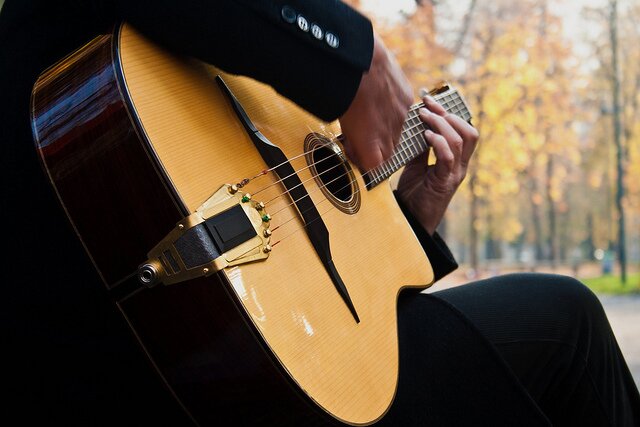
In this lesson you will be given a brief introduction to world of alternative tunings. The variations are endless and you can play around with the tuning of your guitar until your heart’s content. There are no real rules and many players create their own individual tunings. However, there are a few standard tunings that you can get started with.
In this lesson we’ll take a look at two simple tunings; ‘drop D’ and what’s commonly known as ‘DAGDAD’.
Drop D Tuning
‘Drop D’ tuning is used a lot in rock music due to the depth the low D gives to the sound of the guitar. To achieve this tuning you simply drop the note of the 6th string from an E, down to a D. To do this, either use an electronic tuner or match the sound of the 6th string to the pitch of the open 4th string. Alternatively, play the 7th fret on the 6th string and drop the tuning until the pitch matches that of the open 5th string. This is perhaps the easiest way of dropping the pitch of the 6th string to D by ear:

One of the major benefits of drop D tuning is that it allows you to play power chords across one fret, instead of two. This means that instead of playing a single note riff on the 6th string, by using drop D tuning, you can easily play the riff with power chords, giving a really thick and heavy sound that you just wouldn’t achieve with single notes. The TAB below shows you an example of this using a riff on the 6th string. The first line of TAB shows you the riff being played with single notes in standard tuning; the second line of TAB shows you how you can play the same riff with power chords, using drop D tuning.
RELATED How to Play Power Chords on the Guitar
Root notes in standard tuning:

Power chords using ‘drop D’ tuning:

Another advantage of drop D tuning is that when playing an open D chord, you have the extra bass note in the bottom of the chord. Therefore, if you’re playing in the key of D this tuning is definitely something worth considering. It also gives you the chance to add in a riff within the chord sequence as the lowered notes fit really well with the chord. The TAB below shows you a chord-based riff using the open D chord with drop D tuning:

DAGDAD Tuning
DAGDAD is another commonly used tuning. Due to it’s open sound, it lends itself very well to acoustic playing and can be used to give a standard minor/major chord sequence a slightly different sound.
Below are two charts showing you how to tune your guitar into ‘DAGDAD’. The first chart shows what note each string is tuned to when using standard tuning, the second shows you what each string should be tuned to for ‘DAGDAD’ tuning.
Standard Tuning:

DAGDAD Tuning:

The main benefit of DAGDAD tuning is that it allows you to play some different versions of chords, that you just couldn’t get when using standard tuning. The diagrams below show you how to play a few chords using DAGDAD tuning. Have a go and see what you think of the different sound this tuning creates:



image credit – portugallia